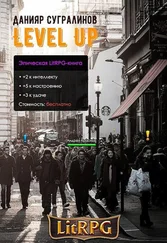Martha came in. “THEY’RE MAKING THREAT DISPLAYS AT YOU,” she said. “THEY DON’T RECOGNIZE YOU.”
The monkeys could recognize human faces, even inside a space suit. The monkeys knew Martha and Jeremy, and seemed to look forward to their visits, for the humans fed the monkeys treats. The monkeys also seemed to find humans entertaining.
As a part of the Institute’s work in developing drugs and vaccines to protect humans against diseases, researchers exposed monkeys to viruses and then tested various treatments on them. Many monkeys died during such tests, but there were always survivors. “THIS MONKEY IS A SURVIVOR OF A COMBINATION OF SIMIAN HEMORRHAGIC FEVER AND EBOLA VIRUS,” Jeremy told me, pointing to one. “AND THIS ONE SURVIVED MARBURG VIRUS,” he said, pointing to another.
Marburg is the type of Ebola associated with Kitum Cave. The monkey that had survived a Marburg infection was about six years old, and his name was Eighty-seven. His odds of survival had been slim, but now he was healthy and very likely immune to Marburg. He was smart and easily bored. He yawned at us, exposing cruel-looking fangs.
Jeremy shuffled over to a shelf and got a box of Froot Loops cereal. Eighty-seven became excited.
Jeremy handed me the box and suggested that I give some of the cereal to Eighty-seven, to help make friends with him. I pulled a couple of Froot Loops out of the box. Keeping my eyes averted respectfully, for Eighty-seven was a dominant male and would become angry if I looked at him (in monkey language, staring is the equivalent of giving the finger), I placed the Froot Loops on my palm and held out my hand. The monkey’s arm shot out of the cage, and he plucked the cereal from my palm and crammed it into his mouth, and then held out his hand for more. He might have been able to tear my space suit if he had wanted to, but once I had offered him Froot Loops he became friendly. I offered him more Froot Loops. He kept shoving his hand out for more. A Froot Loop fell to the floor, and Eighty-seven followed it with his eyes, looking wistful, I thought. He put out his hand for more.
The Army people had become fond of the monkeys. Their feeling was that any monkey that had survived Ebola should be allowed to live out the rest of its days in peace. In addition, the survivors’ blood contained immune antibodies to the viruses, which could be used in experiments. But the monkeys could not leave the hot zone, because there was a worry that they might still be silent carriers of the viruses that had once infected them. “BASICALLY, NOBODY KNOWS MUCH ABOUT EBOLA OR MARBURG, SO WE DON’T KNOW IF THE MONKEYS COULD INFECT ANYONE WITH THESE VIRUSES EVEN AFTER THEY’VE RECOVERED FROM THE DISEASE,” Jeremy said.
We said good-bye to the monkeys and returned to the laboratory rooms. Finally it was time to make an exit from the hot zone. I followed the researchers through the maze of corridors and little rooms to the air lock.
Jeremy entered the air lock first and started the chemical shower by pulling on a chain. The shower began running in the air lock, sterilizing the outside of his space suit. While Martha and I waited for Jeremy to finish his chemical shower, I handed her my Level 4 Bic pen. She left it near a computer for the next person to use. Then Martha and I went into the air lock together. She pulled the chain and we stood under the chemical shower. The chemicals gave off a strong but not unpleasant smell, which eventually crept inside my space suit.
Martha pointed to my Teflon paper—my notes—which I held clutched in my glove. “LET ME HAVE THAT FOR A SEC,” she said. She crumpled it up, dipped it into a bath of chemicals, and then, using both hands, she scrubbed the Teflon paper against itself and squeezed it, as if she were rinsing a washrag. After a minute or so, she pulled the paper out of the chemical bath. My notes were wrinkled, wet, and sterile. The shower stopped, and I opened the steel door and stepped into the normal world, holding the notes.
Later, I wrote about Nancy Jaax’s feelings after she had gotten a hole in her space suit and she was standing in the chemical shower, feeling Ebola blood oozing around inside her suit and wondering who was going to pay the babysitter. I constructed the passage primarily from detailed interviews with Nancy Jaax, of course. Yet there is something else in that scene that did not appear in the book. It was an iceberg of personal experience, one I hadn’t felt able to write about until now. I had been in the rooms she had been in. There, I had experienced a breach condition in my space suit, too, and it had happened in the presence of a putative hot Marburg-like Unknown. And I had stood in the same chemical shower afterward, with thoughts and fears pouring through my mind…. I had been boiled in the soup.
* * *
I LOVE EXPLORING UNSEEN WORLDS. In this book, we are embarking on a deep probe through the realms of the vanishingly small, where, at times, all we can say is “There be monsters.” The chapters in this book were originally published in The New Yorker, but I’ve expanded, updated, and linked them.
One monster of the microscopic universe is a mysterious genetic disease, called Lesch-Nyhan syndrome, which is caused by the alteration of a single letter of a person’s DNA code. If one letter of the human DNA is altered in a certain place in the code, the person who is born with the tiny error has a dramatic change of behavior—a lifelong, irresistable compulsion to attack himself, chewing off…it’s in the last chapter.
“The Mountains of Pi” describes David and Gregory Chudnovsky, mathematicians who built a supercomputer out of mail-order parts in Gregory’s apartment in New York City. They were using their homemade supercomputer to calculate the number pi (π) to billions of decimals. They were looking deep into pi, down into an infinitesimal smallness of precision, deeper and deeper into pi, trying to get a glimpse of the face of God.
I originally wrote about the Chudnovskys in a “Profile” for The New Yorker. When I first met them and began researching the piece, they seemed pleased that I was writing about pi, but they soon got the idea that I was also writing about them. They began to object. “My dear fellow, can’t you leave our names out of this?” David said.
I had to explain that it is not really feasible to leave a person’s name out of a New Yorker “Profile” of him.
This puzzled me, why the Chudnovskys didn’t want their names used. The answer, as I finally figured out, had to do with the nature of mathematics as a human activity. Mathematics is not strictly science, nor is it absolutely art. Mathematics is both objectively rigorous and highly creative, and so it spans the divide between the two worlds, and expresses the unity of science and art. In effect, mathematics is a cathedral of the intellect, built over thousands of years, displaying some of the greatest achievements of the human spirit. The Chudnovsky brothers saw themselves as anonymous workers adding a few details to the cathedral. Their names didn’t matter.
When I had finally gotten their reluctant assent to let me write about them as people and had finished drafting “The Mountains of Pi,” a fact-checker from The New Yorker named Hal Espen paid a visit to the Chudnovsky brothers in order to verify the facts in my piece. Soon afterward, Gregory phoned me in a state of indignation. Hal Espen had spent a long time in Gregory’s apartment, looking at the things I’d described and asking the brothers many questions. At one point, he wanted to confirm that Gregory owned hand-sewn socks made of scraps of cloth, as I had written, so he asked Gregory if he could see his socks. Gregory wasn’t wearing them, so Espen ended up looking in one of the drawers of Gregory’s dresser, where he found the socks and verified my description of them. “He was a nice guy, but why did he have to rifle through my socks?” Gregory demanded. [1] Hal Espen later became a senior editor at The New Yorker and later the editor of Outside magazine.
If the names of the cathedral workers didn’t matter, their socks mattered even less. But Gregory Chudnovsky’s socks mattered deeply to me, for the same reason that the color of Nancy Jaax’s eyes and the scar on her hand mattered. The business of a writer, in the end, is human character, human story. Unlike a novelist, a narrative nonfiction writer cannot make up details of character. For the nonfiction writer, details must be found where they exist, like diamonds lying in the dust, unnoticed by passing crowds.
Читать дальше








![Shin_Stark - В подземелье я пойду, там свой level подниму X [СИ]](/books/384602/shin-stark-v-podzemele-ya-pojdu-tam-svoj-level-po-thumb.webp)



